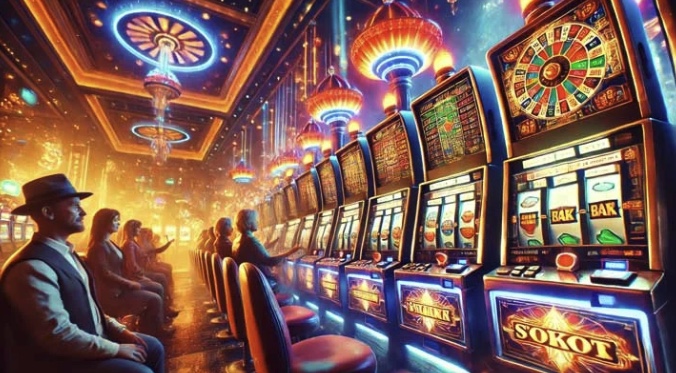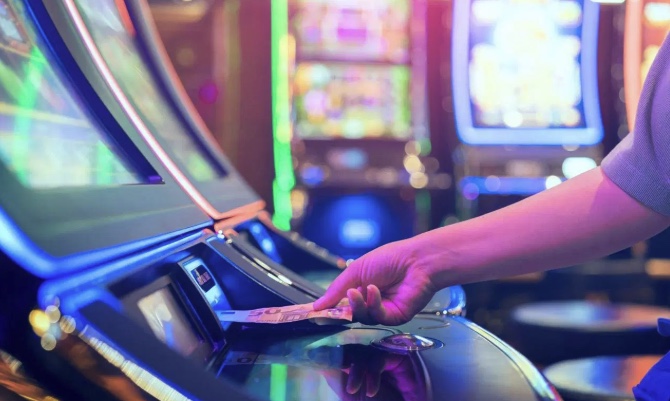The Psychology Behind Slot Machines: Why We Keep Spinning

Slot machines are one of the most addictive forms of gambling, designed to keep players spinning for as long as possible. Their appeal isn’t entirely chance-based—it’s driven by carefully crafted psychological elements that influence player behavior.
From reward schedules to near-miss effects, slot games use psychological stimuli to create engagement and anticipation. Flashing lights, sound effects, and variable rewards activate the brain’s reward system, promoting repeat play. For instance, if you choose to play free slot Mahjong Ways 2 by PG Soft, you’ll experience firsthand how such design elements can keep you engaged and trigger anticipation.
This article reviews the key psychological processes involved in slot machines, including the use of variable rewards, the illusion of control, and game design elements that facilitate prolonged gambling. By understanding these processes, players can recognize how slots influence decision-making and why they remain so appealing.
The Science of Slot Machine Engagement
Slot machines are made to hold the player’s interest by utilizing psychological mechanisms that access the brain’s reward system. The most powerful mechanism employed is intermittent reinforcement, whereby the payouts follow a random pattern so that any spin has the possibility of being the jackpot. The unpredictability of this mechanism has the players spinning, as the uncertainty of the reward induces tension and excitement.
Underlying all of this is dopamine, a neurotransmitter that connects pleasure and motivation. With every win—a big win or a small win—the brain releases dopamine, reinforcing the behavior and urging further play. Even close calls, when a player is only one symbol away from winning, have been shown to prompt similar dopamine reactions, which makes the activity all the more appealing.
The glitzy graphics, holiday music, and potential jackpot all work together in an addictive pattern of play. Taken together, they hold the player’s attention, and it is easy to get caught up in time and money spent. Players can recognize how the slot machine is created to be entertaining and encourage continued play by being aware of these psychological hooks.
Psychological Triggers That Keep Players Spinning
Slot machines employ several psychological principles to entice and maintain individuals playing, typically to the extent of being difficult to stop.
The Near Miss Effect is perhaps the most powerful stimulus. When a player is presented with two jackpot symbols on the reel but fails to get the third by fractions of an inch, the brain perceives it as almost winning, not losing. This makes players continue playing, as the next spin might be “the one.”
LDWs are another key feature. Many slots pay small amounts of money, which are smaller than the initial wager, but they have lights and celebratory sounds. They give the players the illusion that they have won, but they lose money in the end.
Illusion of Control is also present. Voluntary stops on reels or choosing bonus features provides an incorrect sense that choice matters in outcomes, thereby creating more involvement.
Finally, light, sound, and animation reinforce behavior. Glowing lights, lively music, and energetic animations illuminate slot machines, activating the brain’s reward circuit so each spin is rewarded, with or without a good outcome.
These stimuli act in concert to have players spinning, usually longer than they initially planned.
Game Design Strategies That Enhance Retention
Slot machines are carefully designed to maximize player engagement and encourage extended play. Several key game mechanics contribute to this retention strategy.
- Reel Design & Paylines play a crucial role in keeping players invested. Unlike traditional three-reel slots with a limited number of paylines, modern slots feature hundreds or even thousands of ways to win. Games with mechanics like Megaways constantly shift the number of paylines, creating a sense of unpredictability that keeps players spinning.
- Bonus Features & Free Spins serve as powerful incentives. The possibility of unlocking free spins or interactive bonus rounds provides a sense of achievement and fuels the desire to keep playing. These features often include multipliers, expanding symbols, or retriggers, reinforcing the idea that bigger wins are always within reach.
- Progression Systems such as levels, achievements, and loyalty rewards further enhance retention. Many slots incorporate mechanics where players unlock new features, themes, or in-game rewards as they continue playing. Loyalty programs in online casinos take this a step further by offering perks for frequent play, reinforcing long-term engagement.
By combining these elements, slot machines create an experience that feels dynamic and rewarding, making it harder for players to walk away.
The Role of Cognitive Biases in Slot Machine Play

Cognitive biases influence what the players believe they can win, and they typically lead to illogical decisions. Slot machines exploit these shortcuts in the mind to keep players playing.
- Gambler’s Fallacy is that a win is “due” after a string of losses. Players think that since they have lost several spins in a row, the next one is certain to be a win. But slot machines are played using random number generators (RNGs), which means that each spin is independent and what has happened in the past has no influence on what will happen in the future.
- The Availability Heuristic makes players recall wins more intensely than losses. Casinos reinforce this with flashing lights and fanfare for even small wins, which gives the impression that winning is common—when, in fact, losses greatly exceed wins.
- Sunk Cost Fallacy compels players to continue playing in the hopes of “recouping” their previous losses. Rather than abandon their losses and leave, they rationalize ongoing play by taking money already invested into account, and the prospect of sooner or later experiencing a big win.
These biases have a powerful psychological pull as well, and the players find it difficult to let go even when logic demands otherwise.
Conclusion & Responsible Gambling
Slot machines use psychological triggers like near misses, sensory stimulation, and cognitive bias to sustain activity. An understanding of these means control is maintained. Limitations should be established, self-exclusion mechanisms used, and chasing loss prevented. These are the key responsible gambling strategies. An understanding means gambling is entertainment, not compulsion.
Spotted something? Got a story? Send a Facebook Message | A direct message on Twitter | Email: [email protected] Latest News









